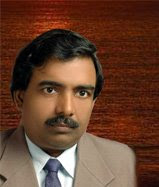1. From the following reaction sequence,
CaC2 + H2O ® CaO + C2H2
C2H2 + H2 ® C2H4
nC2H4 ® (C2H4)n
Calculate the mass of polyetheylene which can be produced from 10 kg of CaC2 Ans. 4375g
Cl2 + 2KOH ® KCl + KClO + H2O
3KClO ® 2KCl + KClO3
4KClO3 ® 3KClO4 + KCl
Calculate the mass of chlorine needed to produce 100 g of KClO4. Ans. 204.5 g
3. Crude calcium carbide is made in an electric furnace by the following reaction :
CaO + 3C ® CaC2 + CO
The product contains 85% of CaC2 and 15% of unreacted CaO.
(a) How much CaO is to be added to the furnace charge for each 1000 kg of CaC2 (pure) produced?
(b) How much CaO is to be added to the furnace charge for each 1000 kg of crude product ?
Ans. (a) 1041.5 kg ; (b) 893.7 kg
4. From the following reactions, 2CoF2 + F2 ® 2CoF3
(CH2)n + 4n CoF3 ® (CF2)n + 2nHF + 4n CoF2
calculate how much F2 will be consumed to produce 1 kg of (CF2)n. Ans. 1.52 kg
5. A mixture containing KClO3, KHCO3, K2CO3 and KCl was heated, producing CO2, O2 and H2O gases according to the following equations :
2KClO3(s) ® 2KCl(s) + 3O2
2KHCO3(s) ® K2O(s) + H2O(g) + 2CO2(g)
K2CO3(s) ® K2O(s) + CO2(g)
The KCl does not react under the conditions of the reaction. If 100.0 g of the mixture produces 1.80 g of H2O, 13.20 g of CO2 and 4.0 g of O2, what was the composition of the original mixture ? Ans. (KClO3 : 10.2 g, KHCO3 : 20g, K2CO3 : 13.8 g
6. A natural gas sample contains 84% (by volume) of CH4, 10% of of C2H6 , 3% of C3H8 and 3% of N2. If a series of catalytic reactions could be used for converting all the carbon atoms of the gas into butadiene, C4H6, with 100% efficiency, how much butadiene could be prepared from 100 g of the natural gas ? Ans. 82 g

